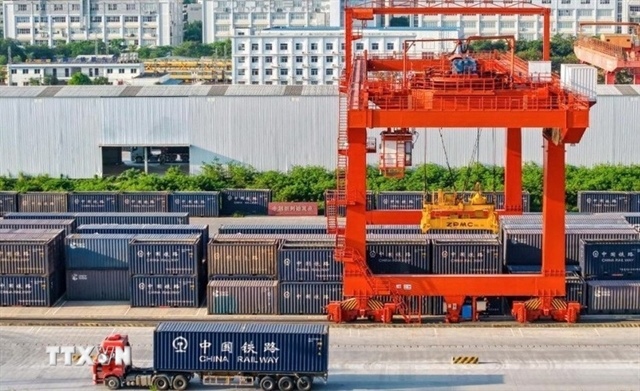Fruit exports to China face competition from neighbors
Fruit exports to China face competition from neighbors
Vietnamese fruits exports to China, its largest market for agriculture produce, are facing growing competition from Cambodia and Thailand.
A farmer harvests dragon fruit in the central province of Binh Thuan in August 2020. Photo by VnExpress/Viet Quoc.
|
Hoang, a farmer in the southern province of Long An, said the number of Chinese traders coming to buy fruits has been declining in the last three years, and along with that, prices.
"There were times when I sold jackfruit at VND70,000 ($3.05) per kilogram and traders would compete to buy, but this year the price has dropped to just a few thousand dong but there are hardly any buyers."
Farmers have been struggling to export mango, jackfruit, avocado, and watermelon to China this year due to rising competition from other Southeast Asian countries.
China has given approval to 37 Cambodian companies to export mangoes, and in early May 80 tons of the fruit were shipped, with a total of 100,000 tonnesto be delivered this year.
China, seeing the high quality of Cambodian mangoes, has allotted a quota of 500,000 tonnes per year.
Cambodia last year earmarked 1,000 hectares of land for growing dragon fruit mainly for exporting to China.
Thailand is another competitor. Vietnamese Ministry of Agriculture and Rural Development has warned that exporters of durian, grapefruit and mangosteen to China will face severe competition from Thailand.
Chinese buyers have also been showing interest in Thai and Malaysian durian since their prices have been dropping in recent years to compete with Vietnamese ones.
Vietnam has no competition from Southeast Asia in lychee exports, but China itself has been increasing the area under the fruit and so prices have dropped by half.
There are also concerns about quality checks. The border province of Lang Son recently warned that eight out of nine fruits being exported to China lack phytosanitary certification, meaning everything would be examined in China delaying customs clearance.
In contrast, this only happens to 30 percent of Thai fruits.
Vo Mai, chairwoman of the Vietnam Gardening Association, said authorities need to have a strategy to diversify export markets and help farmers meet international quality standards.
Optimizing road connectivity would reduce costs and make Vietnamese produce more competitive, she added.
The Plant Protection Department said though exports to China face difficulties, there has been a 30-50 percent increase in exports to Russia, Japan, the U.S., and Australia.
This would help reduce dependence on Chinese buyers, it added.
In the first five months Vietnam’s overall fruit exports rose 18 percent year-on-year to $1.77 billion, with China accounting for 63 percent.


























